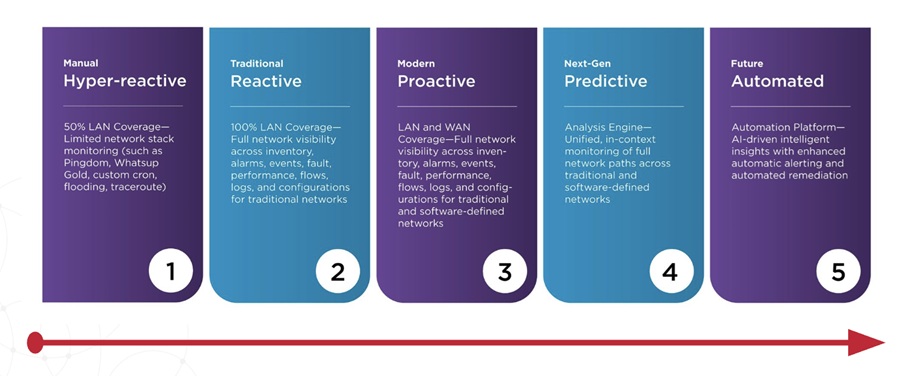
We are in an era where the rate of technology adoption across nearly all industries has increased significantly in recent years. Growing enterprise complexity has increased demand for new models for business transformation in the form of deployment, scale, and change acceleration. This renewed acceleration of technology adoption is redefining enterprise IT Operations (ITOps).
The increase of instrumentation, monitoring and integrations has increased the amount of data generated by organizations — which created two challenges:
1. making sense of it has become difficult with standard methods.
2. It has also increased noise in the ecosystem, which is leading to high false alerts.
These have led to the need and eventual creation of a new market category within the space of enterprise IT called "AIOps" — the application of Artificial Intelligence (AI) for IT operations.
AIOps is rapidly becoming a de-facto option for enterprises' IT strategies, with nearly immeasurable benefits to be provided. However, AIOps is still a relatively new discipline and misconceptions surrounding the technology's capabilities and uses have caused bottlenecks and roadblocks in its widespread adoption.
So, what should organizations expect from AIOps?
How can organizations that want to digitally transform their IT pursue AIOps for maximum benefit?
What is AIOps? Why AIOps?
First, let's see exactly what AIOps is and why it's critical in today's enterprise IT environment. Recent digital transformation efforts across industries have redefined enterprise IT Operations and led to the emergence of AIOps.
AIOps refers to solutions that leverage AI and Machine Learning (ML) to acquire enterprise IT data, analyze it and take required actions for autonomous IT Operations. It helps transform enterprise IT operations from being slow and reactive to agile and proactive, thus addressing many key IT operational and business challenges.
Automating IT operations enables easy deployment of modern and agile IT systems that support enterprise-wide digital transformation efforts, such as cloud migration and automation enablement. Traditional IT management solutions that involve manual efforts for tedious and repeatable processes cannot keep up with the pace of rapid enterprise IT changes and leaves IT teams facing challenges surrounding infrastructure complexities, long delays in isolating and resolving IT faults, and inconsistent and variable quality of operations. Deploying AIOps helps to overcome these challenges by acting as an intelligent way to assess enterprise system behavior and detect anomalies, prescribe solutions and proactively take action to resolve IT incidents and prevent disruptions in IT operations.
With the increase in scale of enterprise operations, complexity and accelerating change in technology footprints, i.e., the landscape of digital systems across an organization, AIOps is not just an option, but a necessity. The volume and complexity of data generated by, and coming into, any given organization can be quite voluminous and overwhelming. Handling this with traditional IT systems can be quite inadequate. Making sense from this huge amount of information calls for advanced AI/ML based analytics/intelligence layer.
Also, as data might come from correlated sources it can lead to duplicated work and siloed views if handled through a traditional and siloed IT operations approach. This is because it lacks the ability to provide a correlated enterprise-wide view of digital systems and how they interact across business domains. So, it can never match the scale of this data and also cannot reap the full benefits of this data/information.
Simply making sense of the data/information won't solve the problem, it is also necessary to act on the inference drawn from this data, and this is hugely important. Intelligent automation becomes a necessity here. Hence, the need for a highly intelligent, hyper automated and scalable solution that can combine big data, observability, enterprise context, AI/ML based analytics and intelligent automation to help gain full-stack visibility across hybrid environments, understand normal behavior, understand root causes of issues, fix problems, predict failures and their direct impact on IT and business. Thus, providing resilient and efficient IT operations cross organizations — and the answer lies in "AIOps."
Go to What Is the Deal with AIOps? - Part 2, outlining what to keep in mind when considering DevOps, and what results can be expected from AIOps.


